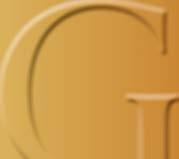A Royal Childhood
From his birth in a palace to the rigours of boarding school, we chart the highs and lows of the King's early years

Birth of a prince
Charles Philip Arthur George Mountbatten-Windsor was born at 9.14pm on 14 November 1948 by Caesarian section, after a 30-hour labour. The Buhl Room at Buckingham Palace had been converted into an operating theatre ready for his arrival. Prince Philip was not present, passing the time playing endless games of squash with his private secretary. Once Charles was born Philip proudly declared that his son resembled a “plum pudding”, and presented his wife with a bouquet of red roses and carnations.

www.britain-magazine.com a royal childhood 18 BRITAIN | crowning of the king
PHOTOS: © PA IMAGES/ALAMY
WORDS NATASHA FOGES
Doting grandparents
When Princess Elizabeth joined Prince Philip at his naval posting in Malta over Christmas 1949, she left one-year-old Charles with his grandparents at Sandringham, missing seeing his rst steps and rst teeth. The demands of the royal schedule frequently took his parents away for weeks on end, and Charles developed a close bond with his grandmother in particular, who had an impish sense of humour and adored her grandson. They remained close until her death in 2002, when he said, “She was quite simply the most magical grandmother you could possibly have.”

www.britain-magazine.com a royal childhood crowning of the king | BRITAIN 19
Becoming Prince of Wales
The investiture of 20-year-old Charles as Prince of Wales took place on a grey and overcast day at Caernarfon Castle, Wales on 1 July 1969. As Charles knelt on a pedestal before his mother the Queen, she bestowed upon him the symbols that marked him as Prince of Wales: the sword, coronet, ring, the gold rod and the kingly mantle. Charles pledged his allegiance to the Queen with the oath: “I, Charles, Prince of Wales, do become your liege man of life and limb.” Some 4000 guests were present in the castle to witness the ceremony, while 500 million watched around the world. He was to be the longest-serving Prince of Wales in British history.
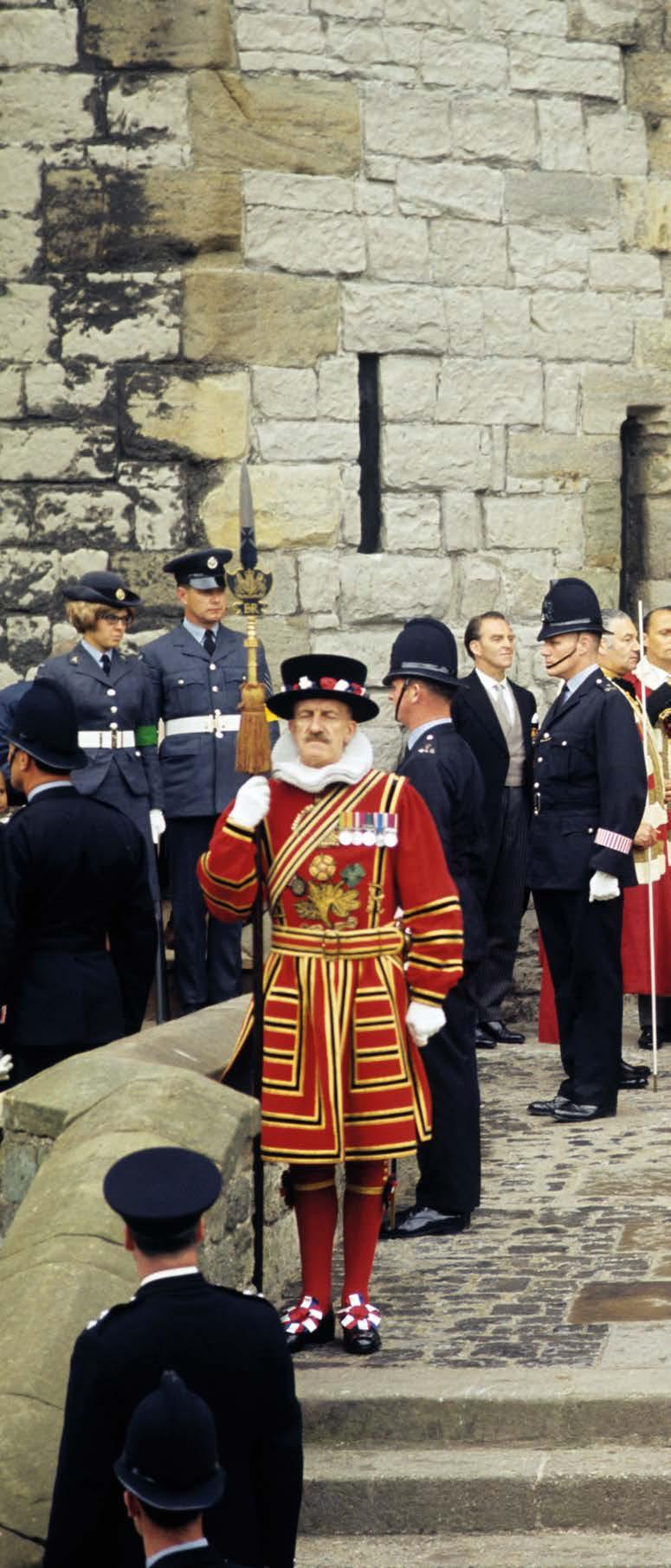
26 BRITAIN | crowning of the king the big picture
PHOTO: © PA IMAGES/ALAMY
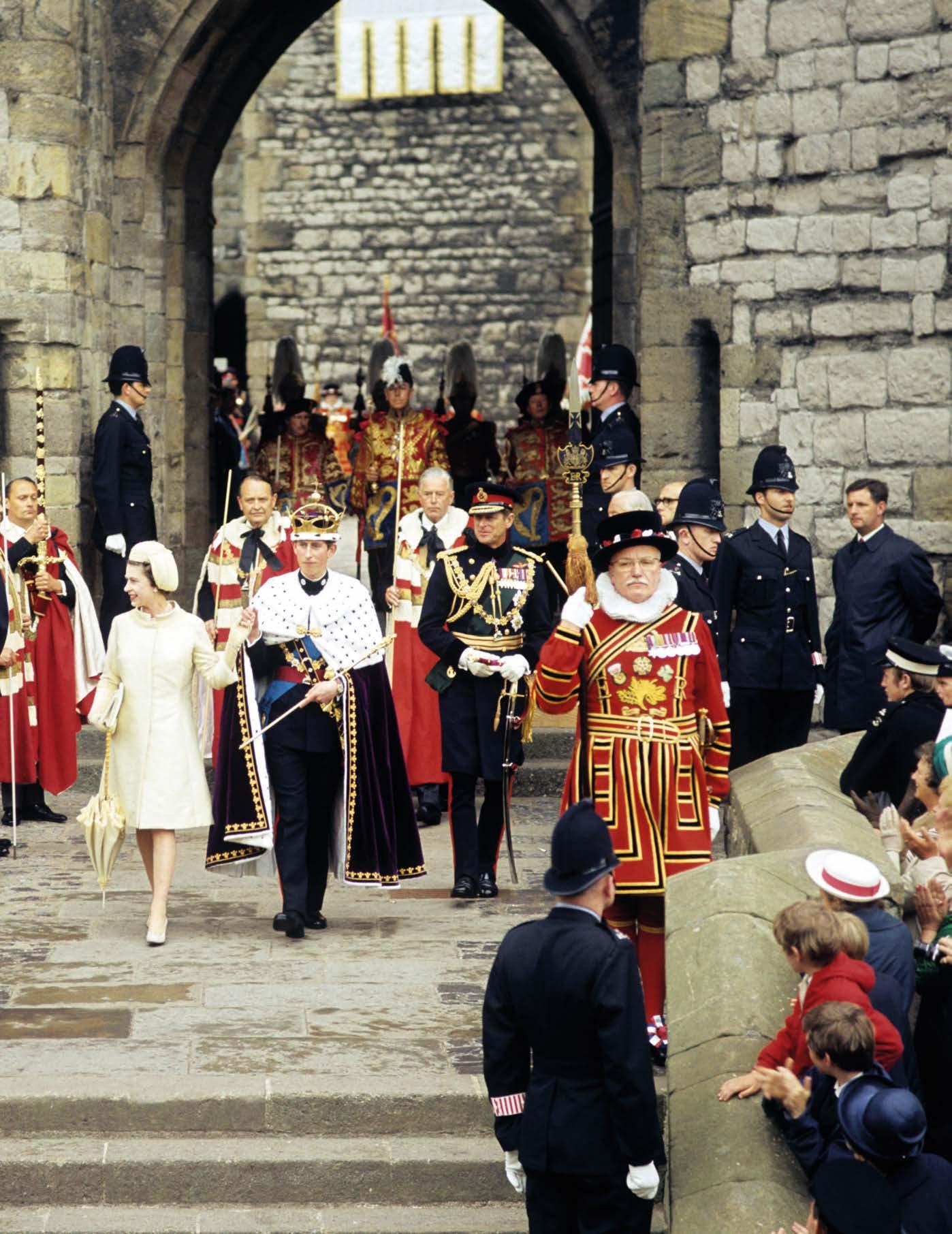
CROWNING GLORY
On 2 June 1953, Queen Elizabeth II was crowned during a three-hour-long ceremony of pomp, pageantry and almost 1000-year-old tradition at Westminster Abbey. She was of cially inaugurated into of ce when she received the glittering St Edward’s Crown upon her head: the chief symbol of regal authority.
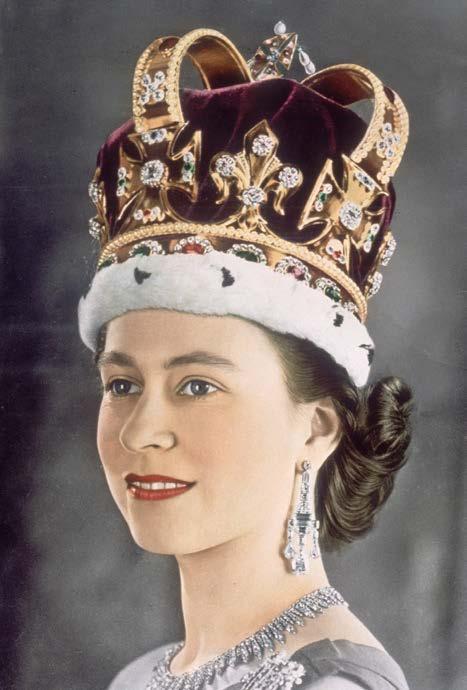
Although King Charles III’s coronation ceremony is expected to look markedly different from the Queen’s (Buckingham Palace has con rmed that it will be two hours shorter), re ecting the new sovereign’s vision for a more modern monarchy, the main aspects of the ceremony will still be rooted in longstanding tradition. These traditions, which remain almost unchanged since they were rst performed for the coronation of
William the Conqueror in 1066, will see King Charles III take the Coronation Oath, be anointed with consecrated oil, receive the Orb and Sceptre, and have the St Edward’s Crown placed on his head by the Archbishop of Canterbury.
But this will not be the only crown we will see during the coronation ceremony on 6 May. We can expect to see three heavily bejewelled crowns used during the service, each with their own symbolism and unique history. In fact, there are seven crowns in total in the British Royal Regalia, one of which has not been used in a coronation since 1651 and which has its own special position elsewhere.
Here, we take a closer look at the key pieces in this royal treasure trove, their fascinating history, and how they are used during coronation ceremonies.
www.britain-magazine.com 48 BRITAIN | crowning of the king the crown jewels
PHOTOS: © HULTON ARCHIVE/MAX MUMBY/INDIGO/GETTY IMAGES
We take a closer look at the history of Britain’s crowns and the role they will play in the coronation of our new King
WORDS HENRIETTA EASTON

www.britain-magazine.com crowning of the king | BRITAIN 49 the crown jewels
e Black Prince’s Ruby was worn by Henry V in his helmet during his famous victory against the French at Agincourt
Left to right: Queen Elizabeth II wearing the St Edward’s Crown for her coronation; The Imperial State Crown sat on top of The Queen’s coffin during her lying-in-state and funeral
Father & SONS
From ski trips to sports matches, snapshots of family life show the King’s more affectionate side
WORDS LAURA SILVERMAN

www.britain-magazine.com 70 BRITAIN | crowning of the king father and sons
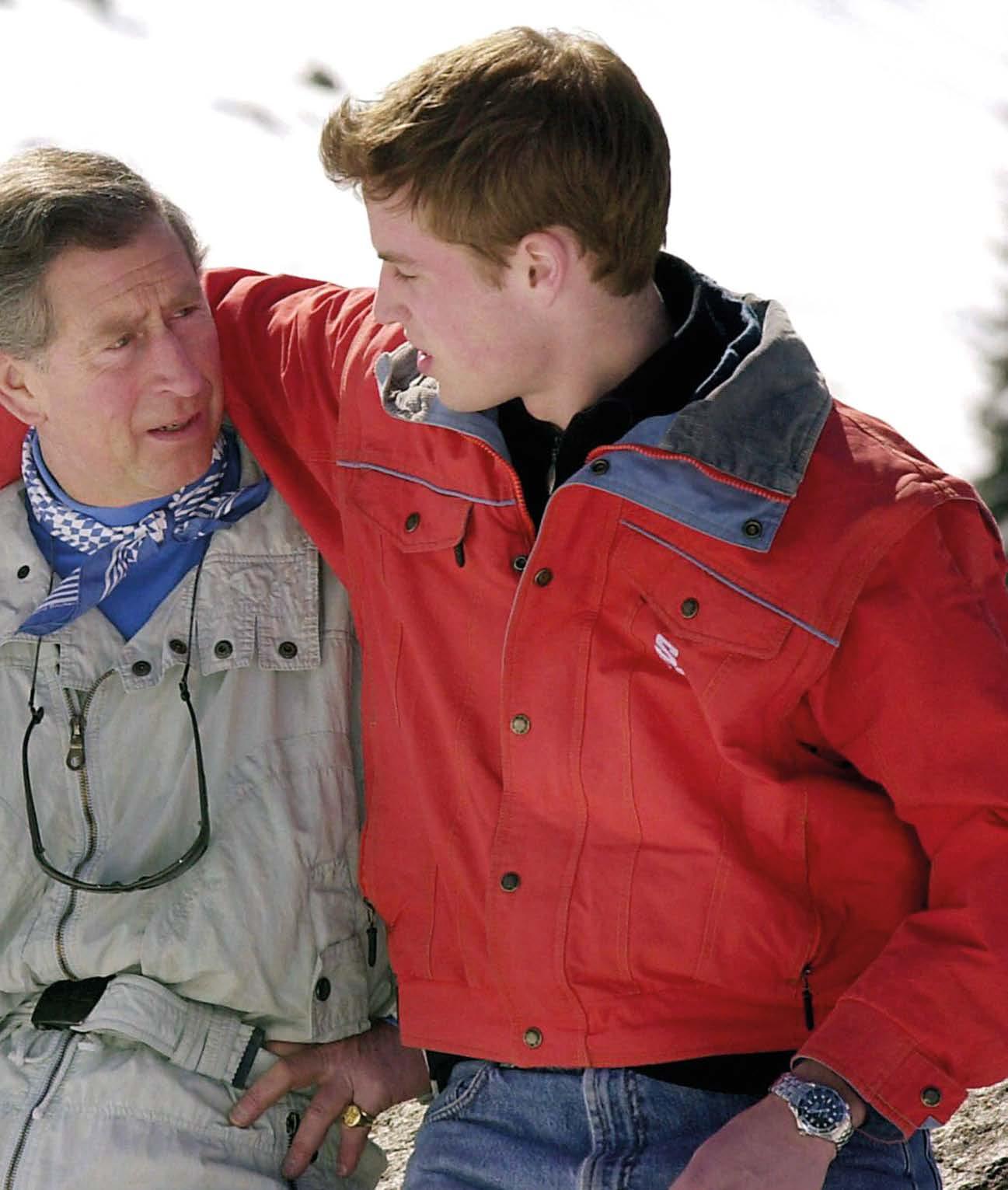
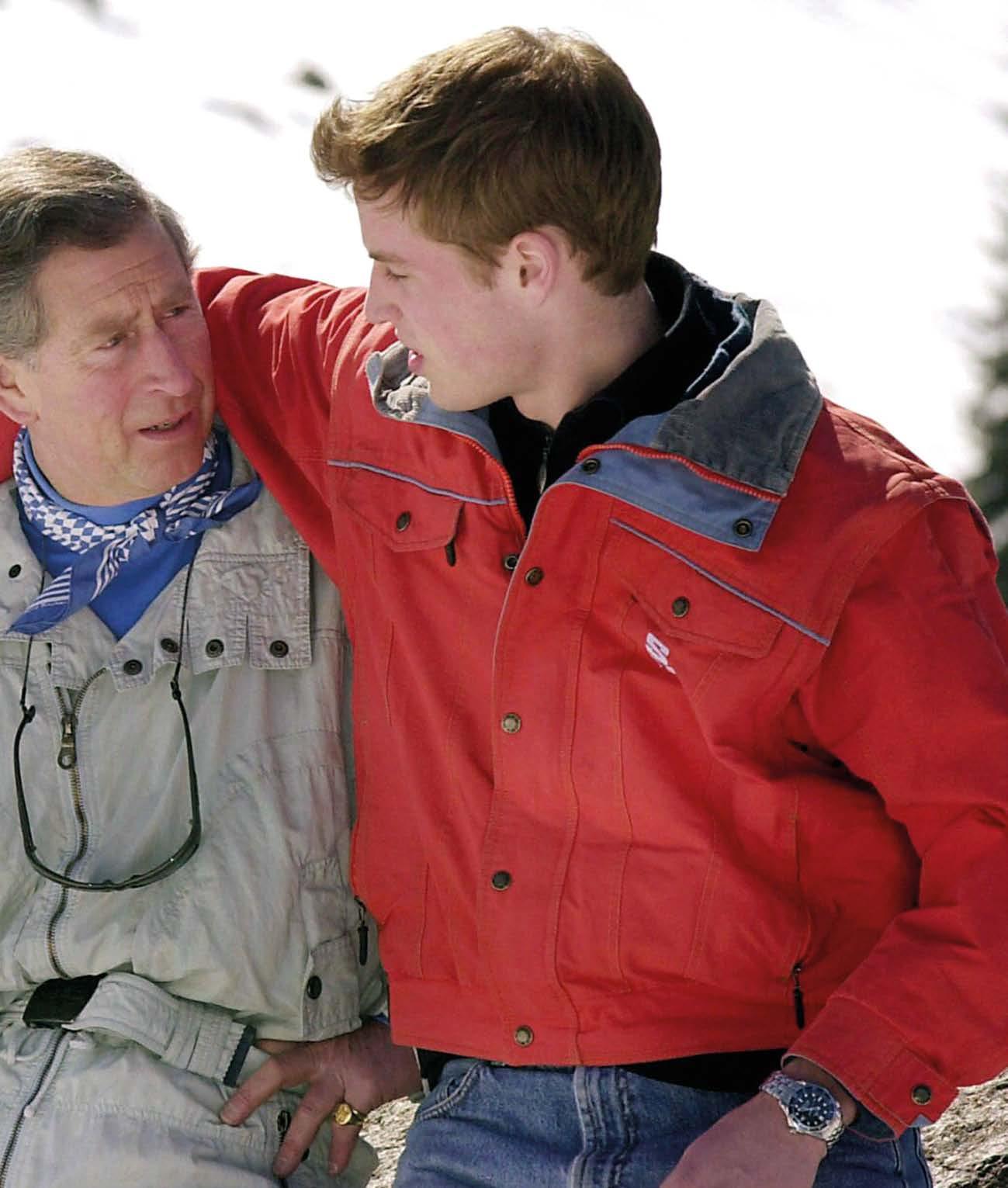
www.britain-magazine.com crowning of the king | BRITAIN 71 father and sons PHOTOS: © PA IMAGES/ALAMY
While the late Queen Elizabeth II had a preference for Windsor Castle and previous monarchs reigned predominantly from Buckingham Palace, we do not yet know which royal palaces will become most associated with King Charles III. It is certain, however, that some of His Majesty’s current houses will remain much loved and visited.
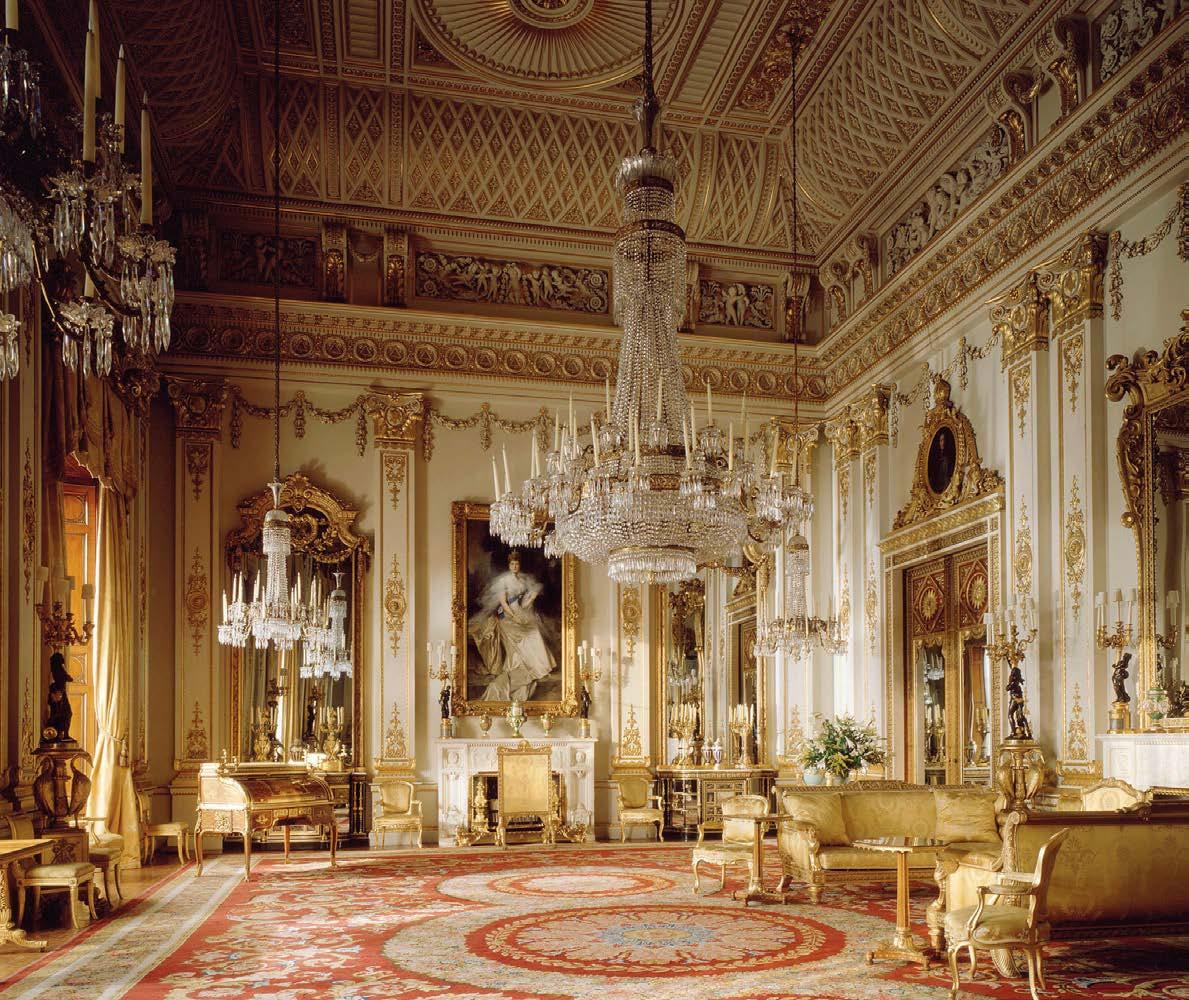
Buckingham Palace was owned by royalty before it became the monarch’s of cial London residence. James I planted a mulberry plantation there, in an ill-fated attempt to start an English silk industry, but his son Charles I gave the estate away when the project failed. It passed through many hands until John Shef eld, Duke of Buckingham, demolished the old manor in the early 18th
Previous page: Highgrove House is King Charles' Cotswolds home This page, clockwise from above: The White Drawing Room at Buckingham Palace; Clarence House; the Garden Room at Clarence House; King Charles with Prime Minister of Canada Justin Trudeau at Clarence House, 2019; the Music Room at Buckingham Palace
century for a brand new ‘Buckingham House’.
In 1762 King George III re-acquired the estate for his wife Queen Charlotte, but the of cial royal court remained at St James’s Palace next door. The Queen had the place remodelled, including some magni cent Robert Adam ceilings, but it was not good enough for her son.
George IV commanded John Nash to turn his mother’s house into an enormous, U-shaped palace. Nash rebuilt extensively, enclosing a stunning forecourt and installing a triumphal arch to celebrate Britain’s recent victories. Nash’s vision broke the budget and after George’s death he was dismissed.
William IV preferred Clarence House, and even offered Buckingham Palace as a substitute Houses of Parliament after a re largely destroyed Westminster Palace in 1834.
www.britain-magazine.com 80 BRITAIN | crowning of the king royal residences
PHOTOS: © THE ROYAL COLLECTION/2023/HIS MAJESTY KING CHARLES III/DERRY MOORE/PETER
SMITH/MICHAEL DUNLEA/ALAMY/REUTERS





















































